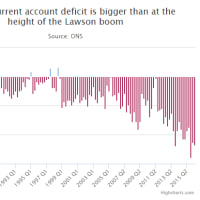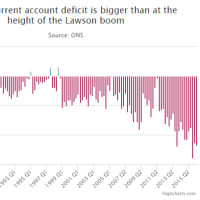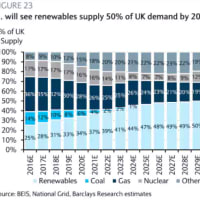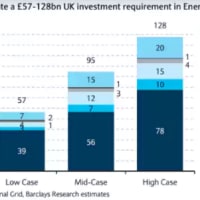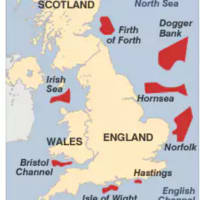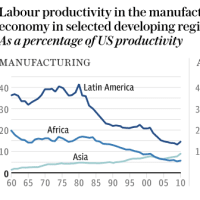US to deploy missiles in Alaska in response to North Korea threat
(米国、北朝鮮の脅迫に応じてアラスカにミサイル配備)
By Raf Sanchez, Washington
Telegraph: 8:21PM GMT 15 Mar 2013


(米国、北朝鮮の脅迫に応じてアラスカにミサイル配備)
By Raf Sanchez, Washington
Telegraph: 8:21PM GMT 15 Mar 2013
The US announced on Friday it was bolstering its missile defences along the Pacific coast in response to the growing threat from North Korea's nuclear programme.
米国は金曜日、北朝鮮の核開発による脅威が高まっていることに応じて、太平洋沿岸部のミサイル防衛システムを強化すると発表しました。
A week after Pyongyang threatened to launch a pre-emptive strike nuclear strike on Washington, the Pentagon said it was increasing its fleet of interceptor missiles by nearly 50 per cent.
北朝鮮政府がワシントンに核の先制攻撃を行うと脅してから一週間後、米国防総省はミサイル防衛システムを50%強化すると発表しました。
Chuck Hagel, the newly-appointed US secretary of defence, said that an additional 14 interceptors would be deployed to Alaska by the end of 2017, raising the overall total to 44 missiles stationed along the West coast.
チャック・ヘーゲル米国防長官は、2017年末までに迎撃機を14基追加配備し、米国西部沿岸で合計44基配備することにすると述べました。
"The United States has missile defence systems in place to protect us from limited intercontinental ballistic missile attacks, but North Korea in particular has recently made advances in its capabilities and is engaged in a series of irresponsible and reckless provocations," Mr Hagel said.
「米国は限定的大陸間弾道ミサイル攻撃から防衛すべくミサイル防衛システムを配備しているが、特に北朝鮮は近年攻撃能力を発展させており、一連の無責任かつ見境のない挑発を行っている」
While North Korea is thought to be at least several years away from developing a capability to strike the US, Mr Hagel said the Obama administration was determined to stay "ahead of the threat".
北朝鮮が米国本土を攻撃する能力を得るまでに少なくとも数年はかかると考えられていますが、同長官は、オバマ政権は「脅威に一歩先んじ」続ける決意だと伝えました。
"Whatever their timelines are [the US must be sure] we're not reacting to those timelines and are ahead of any potential threat," he said.
「彼らのスケジュールに関係なく、我々がそのスケジュールに反応するのではなく、あらゆる潜在的脅威に先んじる(ことを米国は確実にしなければならない)」
Barry Pavel, a former senior director for defence policy at the White House's National Security Council, said that US seeks to maintain a ratio of two interceptors for every potential incoming missile. By that formula, the expanded defence system would be able to intercept up to 22 missiles.
米国家安全保障会議で防衛政策担当高官だったバリー・パヴェル氏は、米国はミサイル1基につき迎撃機を2基配備する割合を維持しようとしていると言いました。
その計算で行けば、追加配備により迎撃可能なミサイルの数は22発ということになります。
However, Mr Pavel said that the Pentagon's announcement was pre-emptive and did not reflect the isolated communist dictatorship's current strength.
しかしパヴェル氏は、国防総省の発表は専制的なものであって、北朝鮮の現在の攻撃力を反映するものではないと言います。
"They have a lot of technical efforts still ahead and I don't expect them to be capable any time soon but perhaps within the next five years? It's possible," Mr Pavel told The Daily Telegraph.
「(北朝鮮は)まだまだ技術的努力をしなければならない。また、直ぐに攻撃能力を得るとは思わない。しかし5年以内には可能かもしれない」とパヴェル氏は同紙に語りました。
The ground-based interceptors have often proved inaccurate during testing but Mr Hagel insisted yesterday "we have confidence in our system".
地上配備型の迎撃機はよく実験に失敗することがわかっていますが、ヘーゲル長官は昨日「システムを信頼している」との主張を変えませんでした。
Last week, the North Korean foreign ministry threatened "pre-emptive nuclear strikes on the headquarters of the aggressors" after the UN voted to begin new sanctions in response to a nuclear test the country conducted in February.
北朝鮮外務省は先週、国連が2月の核実験に対する新たな制裁措置を開始するための投票を行ったことを受けて、「侵略者の心臓部を先制核攻撃してやる」と脅しました。
The test, the country's third, drew international condemnation, including anger from China, North Korea's only major ally. In December, North Korea pressed ahead with a long-range rocket test in defiance of a UN ban.
3度目となる北朝鮮の核実験は国際的非難の的となっており、同国唯一の同盟国、中国まで怒らせました。
12月、北朝鮮は国連の禁止命令に反抗して長距離ロケットの発射実験も実施しました。
Mr Hagel also announced the US would deploy a new radar system in Japan that would give "improved early warning and tracking of any missile launched from North Korea at the United States or Japan".
ヘーゲル長官は、米国は「早期警報と北朝鮮から米国または日本に向けて発射されたミサイルの追跡能力を強化する」新レーダー・システムを日本に配備するとの発表も行いました。
He said that sending additional resources to the Pacific would not impact plans to cover all of Europe under a Nato missile shield by 2018.
同長官によれば、太平洋沿岸地域を強化が、2018年までにヨーロッパ全域をカバーするNATOのミサイル防衛システムの配備計画に影響を与えることはないとのことです。
"Let me emphasise the strong and continued commitment of the United States to Nato missile defence. That commitment remains ironclad," Mr Hagel said during a briefing at the Pentagon.
「NATOミサイル防衛システムに対する米国の強く継続的なコミットメントを強調させてほしい。このコミットメントの堅さは変わらない」
The US military is currently undertaking studies as it decides whether to deploy an additional interceptor site, possibly on the Atlantic coast to counter any future threat from Iran.
米軍は現在、ミサイル防衛システムの追加配備(イランの将来的脅威に対抗するために恐らく大西洋沿岸部)について決定するリサーチを行っています。
"While the administration has not made any decision on whether to proceed with an additional site, conducting environmental impact studies will shorten the timeline for construction should that decision be made," Mr Hagel said.
「米政府は追加配備をするかどうかの決断を下していない。その決断がされた場合、環境への影響に関する研究の実施は、建設スケジュールを短縮されるだろう」
The new Pacific interceptors are expected to cost around $200 million (£132 million) and are being deployed at a time of significant cutbacks at the Pentagon.
太平洋沿岸部への追加配備費用は約2億ドルとされており、国防総省の予算が大々的に削減されている時に配備されることになります。
Under the terms of "the sequester" – a series of sweeping spending cuts that began this month – the department of defence faces $454 billion in cuts over the next decade.
「Sequester(予算の強制削減)」の下で、国防総省の予算は今後10年間に4,540億ドル削減されることになります。
Mr Hagel said the new missile deployments were designed to "counter future missile threats from Iran and North Korea, while maximising scarce taxpayer resources".
ヘーゲル長官は、追加配備は「イランと北朝鮮からの今後のミサイル攻撃の脅威に対抗するものであり、それと同時に納税者の少ないリソースを最大限活用するものだ」と述べました。











